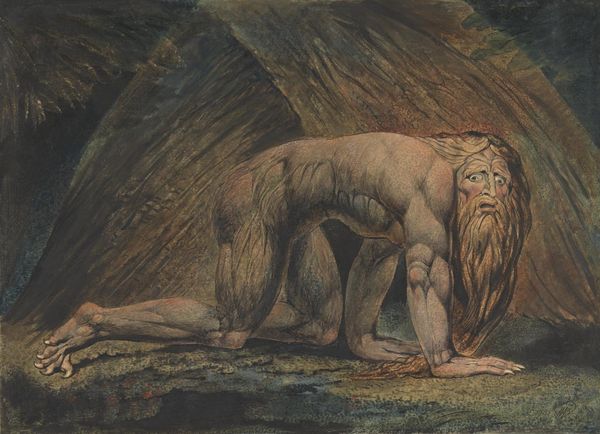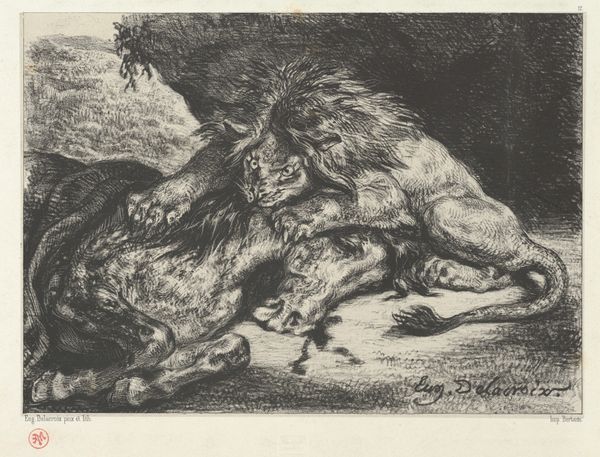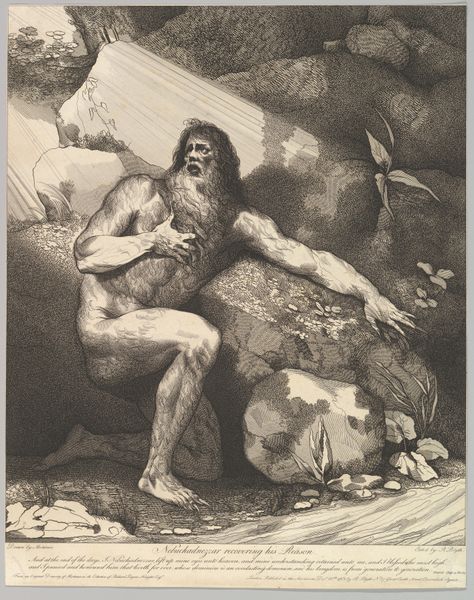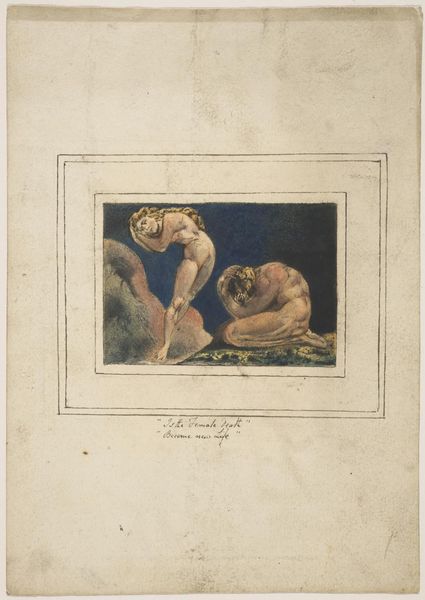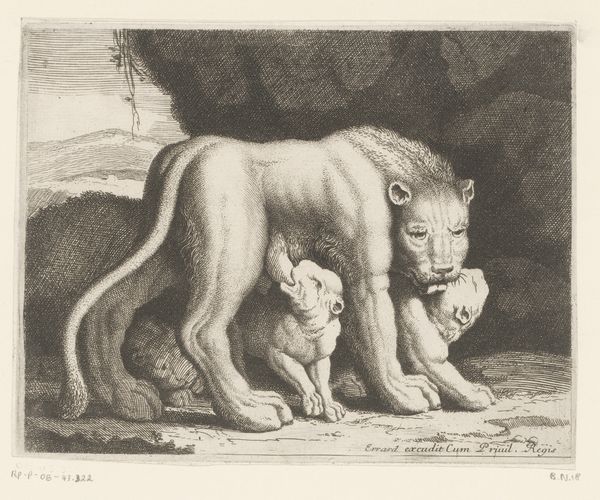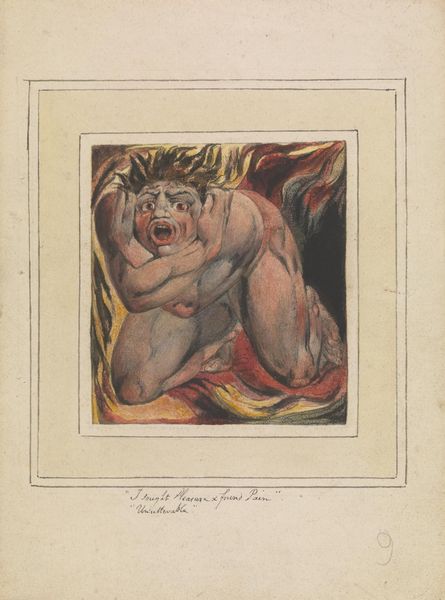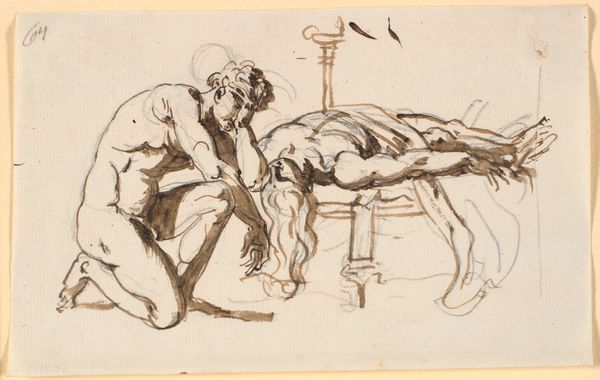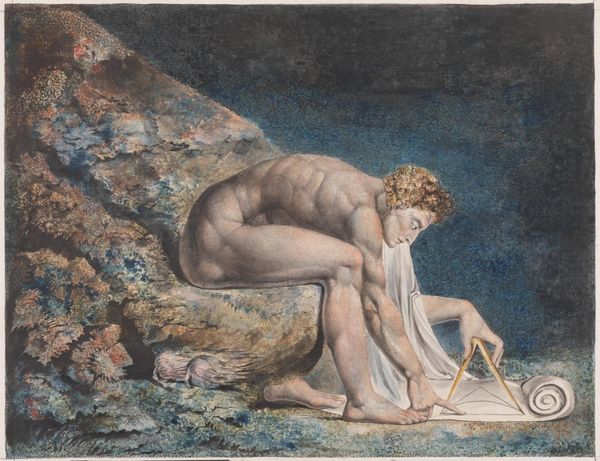
drawing, print, watercolor
#
drawing
#
water colours
#
allegory
# print
#
figuration
#
watercolor
#
romanticism
#
history-painting
#
nude
Dimensions: 16 15/16 x 23 3/4 in. (43.0 x 60.3 cm) (sheet)23 3/4 x 29 3/4 x 1 1/8 in. (60.33 x 75.57 x 2.86 cm) (outer frame)
Copyright: Public Domain
Editor: William Blake’s “Nebuchadnezzar,” from 1795, rendered in watercolor and print. The figure is quite unsettling. What do you see in this piece? Curator: It’s a powerful indictment of power. Blake was deeply critical of institutional authority. Consider the Book of Daniel's account, where King Nebuchadnezzar's hubris leads to his madness and bestial exile. Editor: Right, I remember reading that! The abasement, the loss of reason... Curator: Precisely! Blake, a Romantic, uses this historical allegory to critique the dehumanizing effects of unchecked power, particularly in the context of 18th-century British society. Think about the rising industrialization and the Napoleonic wars—what social parallels can you draw? Editor: I see it now. The Romantic era, in general, reacted to oppressive politics and celebrated personal freedom. The king crawls, like an animal, he is utterly exposed. Curator: Indeed, Blake isn't merely illustrating a biblical tale; he’s using it to address issues of social justice and the inherent worth of the individual in the face of overwhelming forces. What do you notice about Blake’s style here? Editor: His unique expression, and very specific anatomy. This is unlike any painting I've seen! Curator: His style amplifies his message, creating images which are disturbing, and therefore deeply memorable. What would you say is its contemporary message? Editor: It feels like it encourages everyone to question power, even today. Curator: Exactly. By viewing the art with historical knowledge, we realize how truly progressive Blake was.
Comments
minneapolisinstituteofart over 1 year ago
⋮
King Nebuchadnezzar of Babylon failed to heed the prophet Daniel’s warning to mend his sinful ways and show mercy to the poor. God stripped the king of his realm and drove him to “eat grass as oxen, . . . his body . . . wet with the dew of heaven, till his hairs were grown like eagles’ feathers, and his nails like birds’ claws” (Daniel 4:33). Poet-painter William Blake’s luminous exploration of depravity is part of his extended investigation of the Sublime, the irrational realm of visceral, overwhelming emotion—the flip side of the Enlightenment—where God and nature tower over even the most powerful human being.
Join the conversation
Join millions of artists and users on Artera today and experience the ultimate creative platform.
